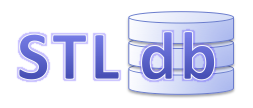
 |
Containers within the database are manipulated using APIs which conform as much as possible to the APIs of the STL. However, all modifications against a container in a database must occur within the context of a transaction. Accordingly, those APIs will require a transaction parameter.
A transaction designates a set of operations which must be atomically committed or rolled back, and from which other threads accessing the database must be isolated until that transaction completes.
Transactions are optional when calling methods of containers which do not modify the container. You can, for example, iterate over the contents of a map without creating a transaction. When containers are accessed without using a transaction, the methods and iterators returned by those methods show only the currently committed data within the container.
To call any methods which modify data within a container, a transaction must be passed.
A transaction is started by calling the stldb::Database::beginTransaction()
method. That method returns a pointer to a transaction object which the application
can then pass to methods which require the transaction.
The stldb::Transaction class
itself has no public methods. It is meant to be used as an opaque type. The
transaction does accumulate data as it is used to perform various operations.
This accumulated data serves to facilitate the commit or rollback of operations
when the transaction is concluded. Because of this, it is not safe to pass
a transaction object from one process to another via any means. However,
a transaction does not have any specific association with a particular thread,
and could be used by different threads during its lifetime. See the section
on threads and transactions (below).
A transaction is ultimately completed by either committing the transaction, or by rolling it back, undoing all changes.
A transaction is committed by calling stldb::Database::commit().
This method completes the transacton by doing the following:
If the application determines at some point in its processing that a transaction
should be cancelled, all pending changes can be undone by calling the stldb::Database::rollback()
method. Rolling back a transaction undoes all changes that were done as part
of that transaction.
After calling either commit or rollback, the transaction object can and must then be deleted by the caller.
The processing of a commit() operation can fail, due to factors like disk failure. In the event of such failures, the operation will have been committed to the in-memory container data, but will not have been written to disk. It is up to the application to determine its approach for handling these failures. However, not that once commit() is called, a subsequent call to rollback() cannot be issued, even in the case that the commit operation fails.
In the STLdb design, there is no direct correlation between transactions and threads. A single thread can create and use multiple transactions against a database. It is not required to have only one outstanding transaction at a time.
Similarly, multiple threads can use one transaction. However, the transaction is not in itself thread-safe. Thus only one thread should make use of a transaction at any particular moment in time.
A transaction is tied to the process which creates it, and to the database which it was created from.
Certain operations on containers, like swap() and clear(), are implemented in a manner which does not permit concurrency. Threads must synchronize around transactons which call swap() and clear() in order to keep those methods efficient, and avoid imposing an unacceptably long period of exclusive access against the containers during commit processing. To address this need in the design, STLdb includes the concept of an exclusive transaction.
An exclusive transaction is so named because when an exclusive transaction
is in progress, no other transaction can be in progress against that same
database. Until the exclusive transaction is completed, no other transaction
(standard or exclusive) can begin. Exclusive transactions are started by
calling stldb::Database::begin_exclusive_transaction().
That method must block if there are any standard transaction in progress.
Likewise, calls to stldb::Database::beginTransaction()
can block if there is an exclusive transaction in progress. If the application
does not make use of exclusive transactions, then the begin_transaction()
method will never block.
The stldb::exclusive_transaction
class is a subclass of the standard stldb::Transaction
class. As such, exclusive transactions are completed by passing them to the
same standard stldb::Database::commit()
or stldb::Database::rollback()
methods that are used to complete standard transactions. The exclusive transaction
can also be passed to any method which takes a standard transaction, and
thus can be used to perform any transactional operation.
An exclusive transaction, as with a standard transaction, can be used to perform any number of operations against any of the containers within the database.